The History of Air Racing
1930 National Air Races
and Aeronautical
Exposition
The 1930 National Air Races were moved to
Chicago, IL. The race site was
the Curtiss-Reynolds Airport, race dates were August 23rd to
September 1st.
The first Thompson Trophy Race would take place in Chicago.
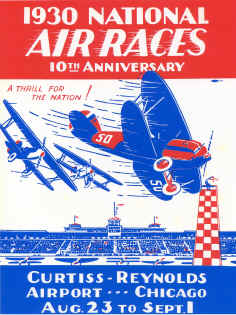
1930 Poster
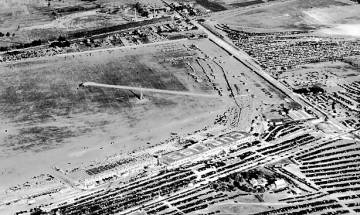
Aerial view of the Air Race site at Curtiss Field
(Sid Bradd collection)
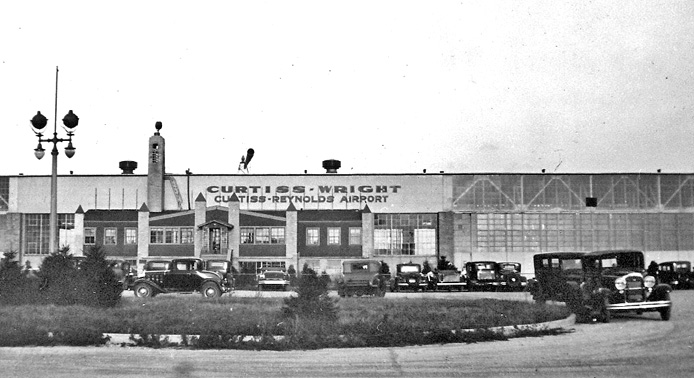
Curtiss Wright Hangar
(Courtesy of Ron Olson & Family)
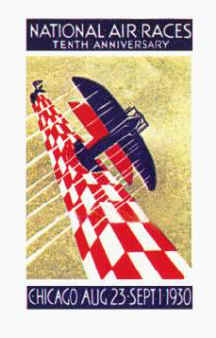
1930 Logo
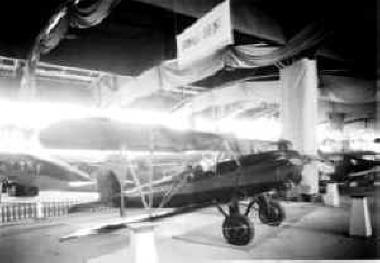
Granville
Bros. side by-side two seat biplane
on display at the Expo
( Sid Bradd Collection )
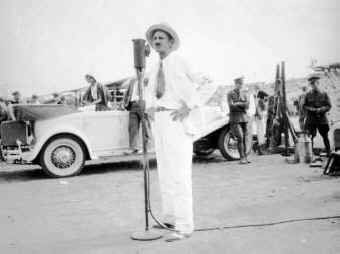
1930 Race official describing
the current event to the crowd.
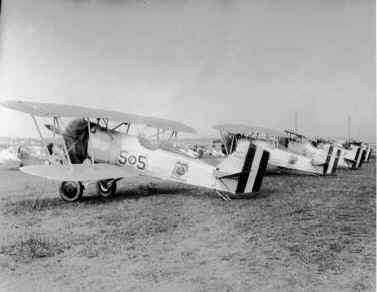
U.S. Marine Corps fighters on display
(Sid Bradd collection)
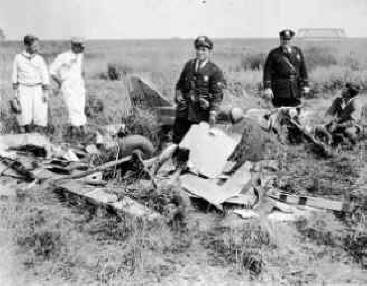
Capt. Mc Ready crashed during one of the smaller
cubic inch races. Miraculously, he escaped with only
a broken nose.
(Sid Bradd Collection)

The men's
non-stop cross country derby ( Los Angeles to Chicago)
attracted no less than four Lockheed Vega's and one air express.
1st place
Wiley Post
2nd place Art Goebel
3rd place Lee Schoenair
4th place William Brock
5th place Roscoe Turner
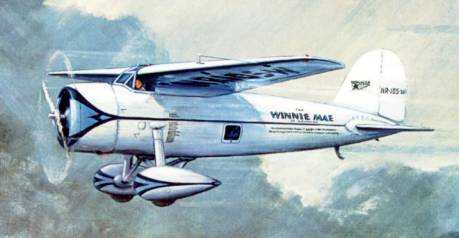
(Hubbell
Print)
Wiley Post's Lockheed Vega later became the" Winnie Mae"
The Women's Class A Pacific
Derby from Long Beach CA to Chicago IL
1st place Gladys O'Donnell in a Waco
2nd place Mildred Morgan in a Travel Air
3rd place Jean La Rene in a American Eagle
The Women's class B Dixie Race
from Washington DC to Chicago IL
1st place Phoebe Omlie in a Monocoupe
2nd place Martie Bowman in a Fleet
3rd place Laura Ingalls in a DH Moth
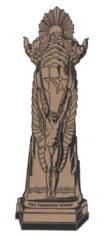
The Thompson Trophy Race
After the embarrassing defeat of the
Nation's finest pursuit ships in the 1929 races
at Cleveland, the military was out for revenge. This time the Navy
would attempt to put
the civilian aircraft manufacturers in their place. This year was
sure to be different!

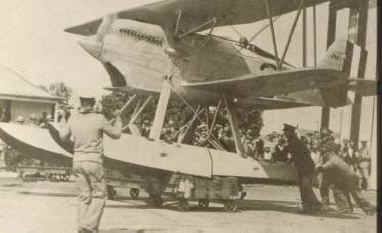
Curtiss Marine Trophy Race at Anacosta Navel Air Station on May 31st. and have Curtiss
modify it to Navy Specifications.
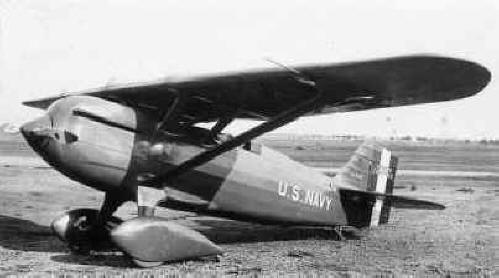
The
lower wing was removed and part of the upper wing was covered with
coolant radiators. Seaplane floats were replaced with a set of
streamlined
landing gears with special wheel pants. The stock Curtiss D-12
engine was
replaced with a 700hp supercharged
Curtiss Conqueror with a new cowling.
The modified Hawk had a top speed potential of 250mph
at it's best
altitude and a projected average speed of 220mph in the race.
The Travel Air R that won
the Thompson Cup was now owned by Curtiss-Wright
and was on tour for the Company. Several more Travel Air R’s
were produced; one
was purchased by the Shell Oil Co., the other by Texaco.
Jimmy Haizlip with the Shell Travel Air entry
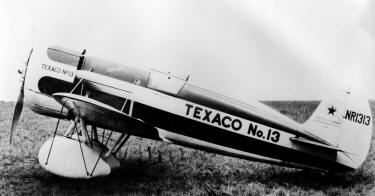
Texaco Travel Air
flown by Frank Hawks
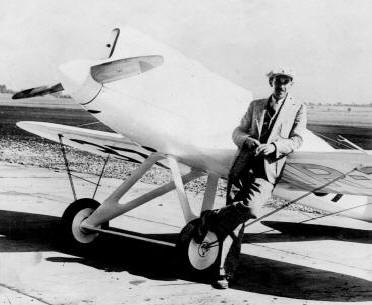
Benny & "Pete"
Benny Howard, a Airline pilot who got his start in aviation by
flying the Air Mail, designed and built this low powered but
very streamlined little ship to fit the size of his body. Benny
made a name for himself in the first "Thompson Trophy Race.
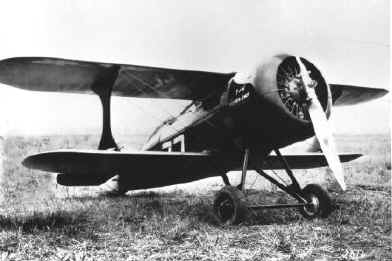
Lee Schoenair,
chief pilot of the B.F. Goodrich Company and
second
place winner of the 1929 cross-country race called "Matty" Laird
president
of the E. M. Laird Aircraft Company of Chicago and asked him to
build a
racer for the 1st Thompson Trophy Race. There was a little over
three
weeks time to complete the plane, but Laird agreed it could be done.
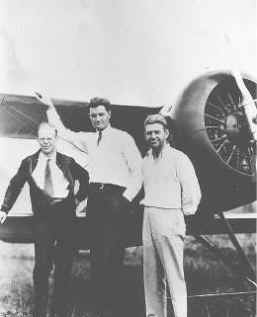

Starting line-up for the Thompson Trophy Race
(Sid Bradd collection)
With 44 scheduled events, the
first Thompson Trophy Race would be the big attraction
of the meet. As expected the revamped Curtiss Hawk flown Arthur Page
of the United
States Marine Corps. took an early lead and after several laps,
passed or lapped
the entire field. The race now concentrated on second place with
Speed Holman and
Jim Haizlip virtually side by side. As Page approached home pylon
for lap seven, he
suddenly pulled up and out of the race and than slid off on the left
wing and nosed down
and and crashed in sight of the grandstands. Captain Page died of
injures the next day.
"Speed" Holman won by a very narrow margin over Jim Haizlip. The
Laird would be
the only biplane to win the Thompson Trophy.
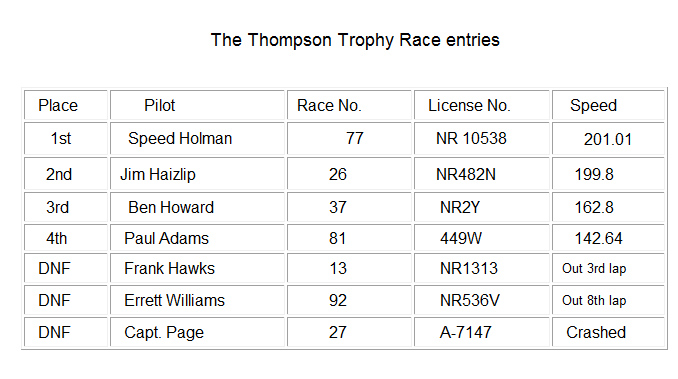
The Laird "Solution" changed hands a number of
times and was modified to
attain greater speed. It never again became a challenger and was
finally acquired
by the New England Air Museum in Windsor Locks (Bradley Field)
Connecticut
and was restored to it's original form where It is currently on
display.
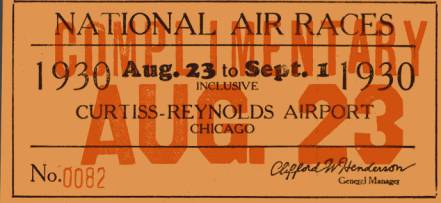
(Bill Meixner collection)
In 1930 the Cleveland Municipal Airport
would be host to the Gordon Bennett
International Balloon Race and Aerial Carnival, August 31st and
September 1st.
The Army sent a Pursuit, Bomber and an Observation
Squadron. The Navy and
"Jimmie" Doolittle were scheduled to pay a visit.
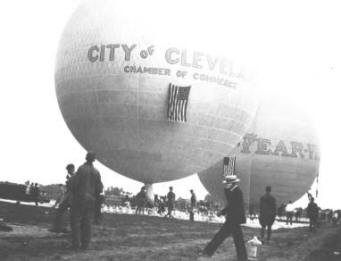
(Sid Bradd collection) Gordon Bennett Race
The City of Cleveland balloon about to be launched
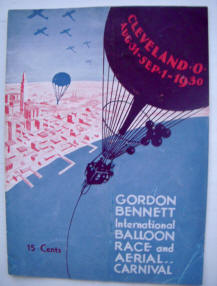
Program Cover
Photos are from the Wes Hansen collection except where noted.
| Updated Tuesday, September 30, 2014 |

